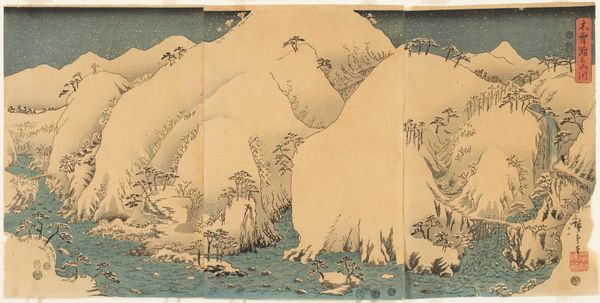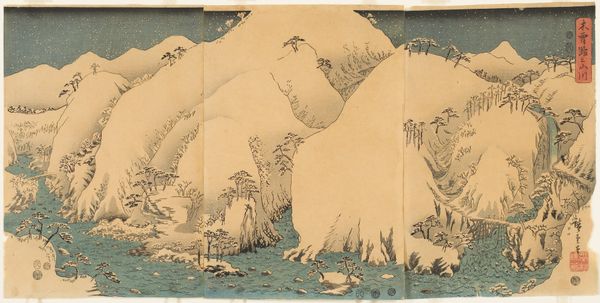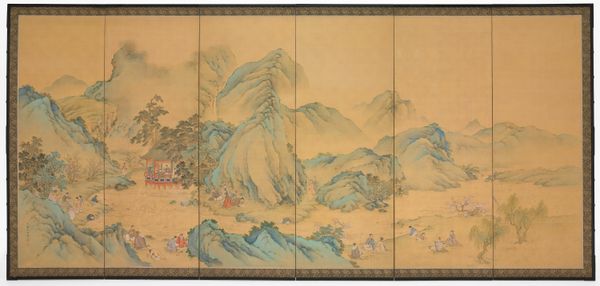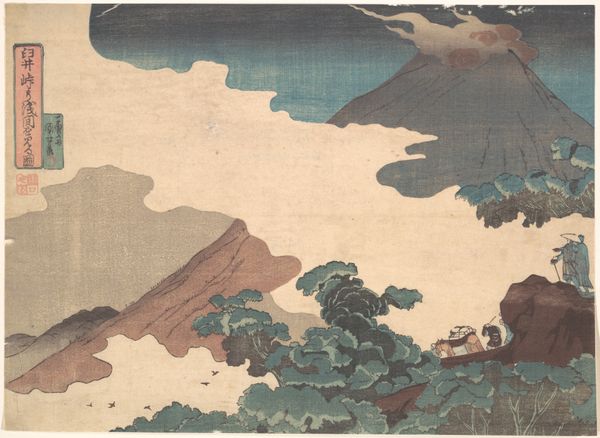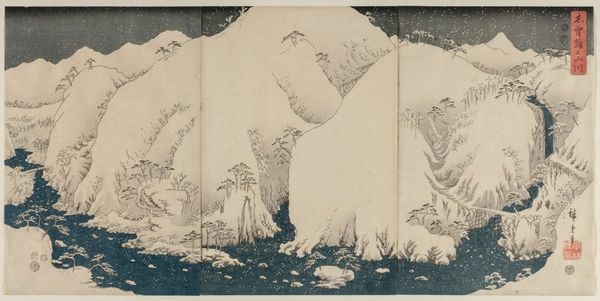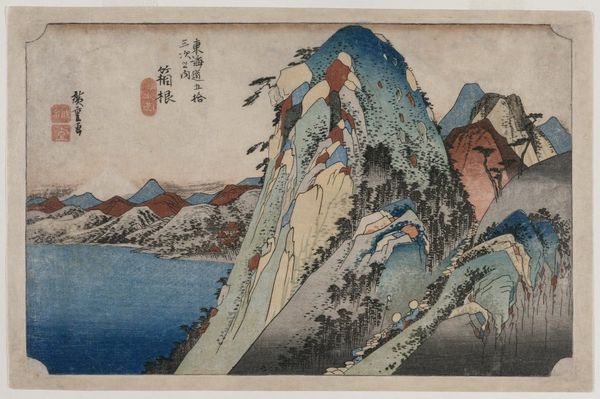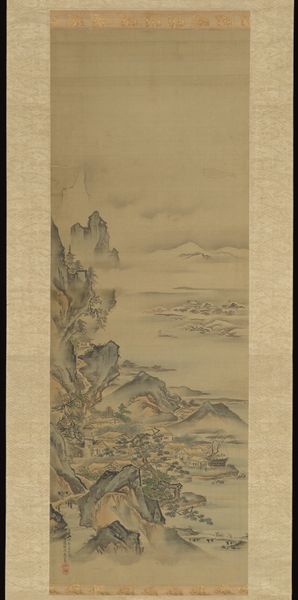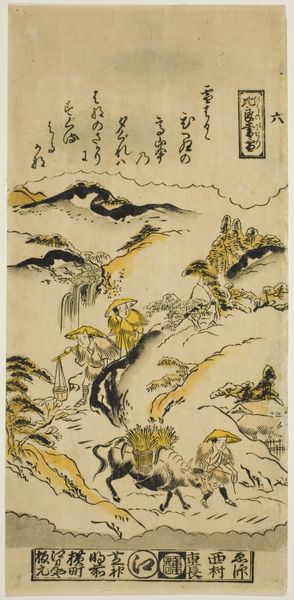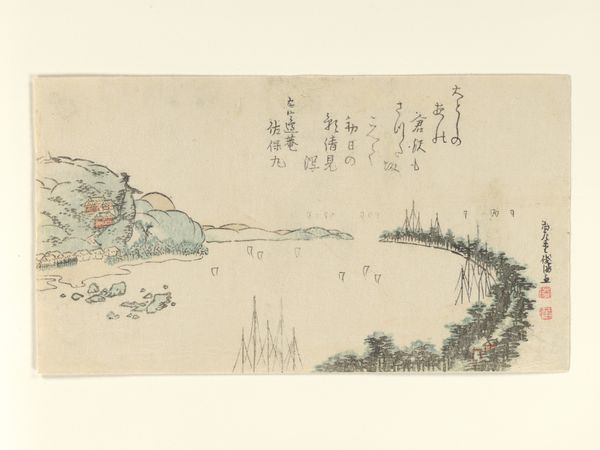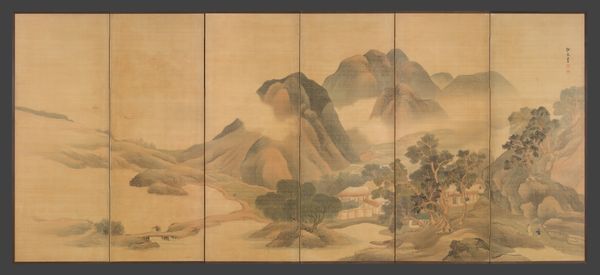
Mountain River on the Kiso Road Possibly 1857 - 1858
0:00
0:00
print, ink, woodblock-print
#
ink painting
# print
#
landscape
#
ukiyo-e
#
ink
#
woodblock-print
Dimensions: 14 3/16 × 9 7/8 in. (36 × 25.1 cm) (image, vertical ōban)
Copyright: Public Domain
Curator: Welcome. Today, we are observing “Mountain River on the Kiso Road,” a print possibly created between 1857 and 1858 by Utagawa Hiroshige. It's part of the collection at the Minneapolis Institute of Art. Editor: A blanket of serene stillness, it strikes me immediately. The composition, primarily whites and blues, has such a muted palette which creates a dreamlike quality. A heavy, yet welcome silence permeates. Curator: Hiroshige’s focus on landscape—particularly through the ukiyo-e tradition—really lends itself to emotional reflection. The depiction of snow, specifically, carries significant symbolic weight within Japanese art. Think of purity, reflection, and perhaps even a sense of transient beauty. Editor: Agreed. The application of ink is remarkably consistent; observe the density of line throughout and how it creates tonal modulations without fully disrupting the picture plane. He employs spatial recession, not by manipulating perspective entirely, but using atmospheric layering. Notice how the overlapping hills fade further into a barely discernible grey against a darker cerulean. Curator: The journey along the Kiso Road would have held cultural meaning. It was one of the major routes connecting Edo—modern Tokyo—with Kyoto. Places such as this became infused with stories and personal odysseys, shaping national identity as well. Hiroshige encapsulates the way in which people related to the natural world. Editor: His command of line in representing the pine trees—so very Japanese—and rock formations is also impeccable. They ground the atmospheric scene while offering contrasting sharpness within this largely dreamlike scene. The materiality, the inherent flatness of the woodblock, becomes part of the language itself. Curator: The enduring quality of Hiroshige’s landscapes really lies in his ability to elicit a universal human response to the ephemeral qualities of the environment. It makes this quite intimate. Editor: Yes, seeing how his aesthetic and formal language transcends its own immediate culture solidifies it. Hopefully the audience leaves seeing beyond just documentation.
Comments
No comments
Be the first to comment and join the conversation on the ultimate creative platform.
